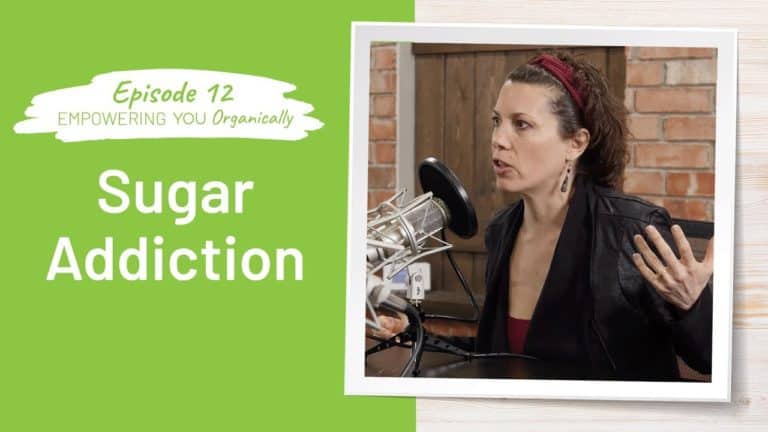Empowering you Organically – Season 2 – Episode 12
Title: Sugar Addiction: It’s a REAL Thing
Hosts: Jonathan Hunsaker & TeriAnn Trevenen
Guest: Susan Peirce Thompson
Description: In this episode, we discuss sugar! We tackle topics like, what is a carb, what is sugar addiction, the problem with flours, how sugar compares to cocaine and heroin in the brain, tips for feeding your kids or grandkids, and much more!
What is a carb?
- Definition: any of a large group of organic compounds occurring in foods and living tissues and including sugars, starch, and cellulose. They contain hydrogen and oxygen in the same ratio as water (2:1) and typically can be broken down to release energy in the animal body.
Dietary carbohydrates can be split into three main categories:
- Sugars: Sweet, short-chain carbohydrates found in foods. Examples are glucose, fructose, galactose and sucrose.
- Starches: Long chains of glucose molecules, which eventually get broken down into glucose in the digestive system.
- Fiber: Humans cannot digest fiber, although the bacteria in the digestive system can make use of some of them.
What is Sugar Addiction?
- Like any other addiction
- It’s essentially dopamine down regulation in the addictive centers, mainly the nucleus accumbens.
- It’s a deep, primal, primitive area of the brain.
- Addiction exerts a long and powerful influence on the brain that manifests in three distinct ways:
- craving for the object of addiction,
- loss of control over its use,
- and continuing involvement with it despite adverse consequences.
- It’s become really widespread, because we have substances in our environment that were manufactured to really hijack those brain centers. Like donuts.
- On a brain scan it looks the same as cocaine addiction, alcohol addiction.
The Problem with Flours
- The grinding down of the particle so that the digestive enzymes hit every surface area of that molecule really hard, and it absorbs into your bloodstream really fast, and then it causes a big dopamine rush in your addictive centers, and so forth.
- The difference between a whole food like rice, for example, and a flour like rice flour, from a metabolic standpoint, is the difference between on a hot summer day in Arizona, taking a big brick of ice, like a one foot square brick. Big brick of ice, and putting it out on the blacktop, on the driveway, to melt. It’ll melt. It’ll take a few hours, though.
- Versus taking snow cone shavings, little shavings of ice, and sprinkling them on the blacktop. Well, they melt on contact. That’s what flour is, is sprinkling snow cone shavings into the digestive system, and it just absorbs like that, and you get the full force of the glucose, the fructose, whatever’s in that, hits the digestive system all at once.
Sugar is More Addictive than Cocaine
Research shows, according to some estimates, that sugar is eight times as addictive as cocaine.
- Study was published in August of 2007
- Rats were allowed to choose mutually-exclusively between water sweetened with saccharin–an intense calorie-free sweetener–and intravenous cocaine–a highly addictive and harmful substance–the large majority of animals (94%) preferred the sweet taste of saccharin.
What Makes Someone Addicable?
You’re pulled toward the cues to a degree that other people are not.
What is Bright-Line Eating
Comprehensive food plan. Manages execution, longevity and compliance over time. Changing your lifestyle.
- No Sugar or Artificial Sweeteners
- No Flours
- 3 Meals a Day – ONLY
- Manage Quantity
Feeding Kids – Ellyn Satter’s Division of Responsibility
- The first rule of thumb is your kids will grow up to eat like you eat. So make sure you’re feeding yourself well.
- As parents, we are responsible for when meals happen and what gets served. We are responsible for providing food. And then we become deaf, dumb, and blind, and we let our kids be responsible for whether and how much to eat from what’s provided.
- Breakfast, lunch, and dinner, and kids need snacks, too. Parents don’t, but kids need a mid-morning snack, and a mid-afternoon snack.
- You provide foods that are foods you feel comfortable serving from lots of different categories.
* * *
Subscribe to Empowering You Organically
Never miss an episode!
APPLE PODCASTS SPOTIFY GOOGLE PODCASTS
–
Episode 12 – Sugar Addiction: It’s a REAL Thing





